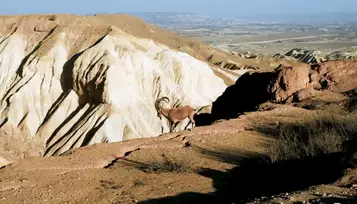: Unveiling the Majesty: Exploring the Secrets of the World’s Largest Continent

The Earth, a vast and diverse planet, is home to seven continents, each with its own unique characteristics and wonders. Among these, Asia stands out as the largest and most expansive, dominating the world’s landmass with its rich history, diverse cultures, and breathtaking landscapes. In this article, we delve into the depths of Asia, exploring what makes it the biggest continent and unraveling the mysteries that lie within its borders.
Geographical Dimensions:
Covering an area of approximately 44.58 million square kilometers, Asia stretches from the Arctic Ocean in the north to the Indian Ocean in the south, and from the Pacific Ocean in the east to the Ural Mountains in the west. Its sheer size is awe-inspiring, dwarfing the other continents. This colossal landmass is home to a multitude of countries, each contributing to the vast tapestry of Asia’s cultural and geographical diversity.
Diverse Ecosystems:
Asia’s enormous size encompasses a wide range of ecosystems, from the frozen tundra of Siberia to the tropical rainforests of Southeast Asia. The continent is blessed with an incredible variety of flora and fauna, making it a biodiversity hotspot. From the majestic Himalayas, home to elusive snow leopards and red pandas, to the dense jungles of Borneo, where orangutans swing from tree to tree, Asia’s ecosystems are as diverse as the cultures that inhabit its lands.
Cultural Tapestry:
Asia’s cultural richness is unparalleled, shaped by centuries of history, tradition, and innovation. The continent is a melting pot of diverse languages, religions, and ethnicities, contributing to its vibrant and dynamic tapestry. From the ancient civilizations of Mesopotamia and the Indus Valley to the modern technological hubs of Japan and South Korea, Asia’s cultural legacy is a testament to the resilience and adaptability of its people.
Historical Significance:
Asia has been a cradle of civilization, giving birth to some of the world’s earliest and most influential societies. The Silk Road, connecting the East to the West, facilitated the exchange of goods, ideas, and cultures, shaping the course of history. Ancient empires like the Chinese, Indian, Persian, and Ottoman have left an indelible mark on the continent, influencing the development of art, science, and philosophy.
Economic Powerhouse:
In the modern era, Asia has emerged as a global economic powerhouse, driving innovation and progress. Countries like China, India, and Japan have become major players in the world economy, contributing significantly to technological advancements, trade, and finance. The bustling metropolises of Shanghai, Tokyo, and Mumbai are symbols of Asia’s rapid urbanization and economic growth.
Challenges and Opportunities:
Despite its vastness and achievements, Asia faces a myriad of challenges. Rapid population growth, environmental degradation, and geopolitical tensions are among the issues that the continent grapples with. However, Asia also presents immense opportunities for cooperation, development, and sustainability. Initiatives like the Belt and Road Initiative seek to connect countries and promote economic collaboration, fostering a sense of unity in the face of shared challenges.
Natural Wonders:
Within Asia’s expansive borders lie some of the world’s most breathtaking natural wonders. From the iconic Mount Everest, the highest peak on Earth, to the mesmerizing landscapes of Cappadocia in Turkey and the Great Barrier Reef in Australia, the continent boasts an array of awe-inspiring sights. The diverse geography, ranging from deserts to mountains to coastlines, ensures that there is something for every nature enthusiast within Asia’s boundaries.
Culinary Delights:
Asia’s culinary landscape is as diverse as its geographical features. From the spicy flavors of Thai cuisine to the delicate sushi of Japan and the aromatic curries of India, the continent offers a tantalizing array of culinary delights. Each region boasts its own unique ingredients, cooking techniques, and culinary traditions, making Asian cuisine a global favorite.
Conclusion:
In conclusion, Asia stands as the world’s largest continent, a vast and diverse expanse of land that encompasses an unparalleled richness of cultures, ecosystems, and history. Its significance in shaping the course of human civilization cannot be overstated, and its contemporary influence on global economics and technology is undeniable. As we continue to explore and appreciate the wonders within Asia’s borders, it becomes evident that this colossal continent is a treasure trove of experiences waiting to be discovered.
What is the biggest continent on Earth?
A1: Asia is the largest continent on Earth, covering an area of approximately 44.58 million square kilometers.
How does Asia compare to other continents in terms of size?
A2: Asia is significantly larger than any other continent. Its vast expanse dwarfs the landmass of other continents such as Africa, North America, South America, Antarctica, Europe, and Australia.
What are the geographical boundaries of Asia?
A3: Asia is bordered by the Arctic Ocean to the north, the Indian Ocean to the south, the Pacific Ocean to the east, and the Ural Mountains to the west.
How diverse are the ecosystems within Asia?
A4: Asia boasts incredibly diverse ecosystems, ranging from the frozen tundra in Siberia to the tropical rainforests in Southeast Asia. The continent’s vast geography contributes to its rich biodiversity.
Can you provide examples of iconic natural wonders in Asia?
A5: Certainly! Asia is home to iconic natural wonders such as Mount Everest, the Himalayas, the Great Barrier Reef in Australia, the deserts of the Middle East, and the unique landscapes of places like Cappadocia in Turkey.
What role has Asia played in human history?
A6: Asia has been a cradle of civilization, giving rise to some of the world’s earliest and most influential societies. The Silk Road, connecting East and West, facilitated cultural and economic exchanges, shaping the course of history.
How has Asia contributed to the global economy?
A7: In the modern era, Asia has emerged as a global economic powerhouse. Countries like China, India, and Japan are major contributors to technological advancements, trade, and finance, making Asia a key player in the world economy.
What are some of the challenges Asia faces?
A8: Asia faces challenges such as rapid population growth, environmental degradation, and geopolitical tensions. However, the continent also presents opportunities for cooperation, development, and sustainability.
What is the significance of Asia’s cultural diversity?
A9: Asia’s cultural diversity is immense, shaped by centuries of history, tradition, and innovation. The continent is a mosaic of languages, religions, and ethnicities, contributing to its vibrant and dynamic cultural tapestry.
How diverse is Asian cuisine?
A10: Asian cuisine is incredibly diverse, with each region boasting its own unique ingredients, cooking techniques, and culinary traditions. From the spicy dishes of Thailand to the sushi of Japan, Asian cuisine is a global favorite.






